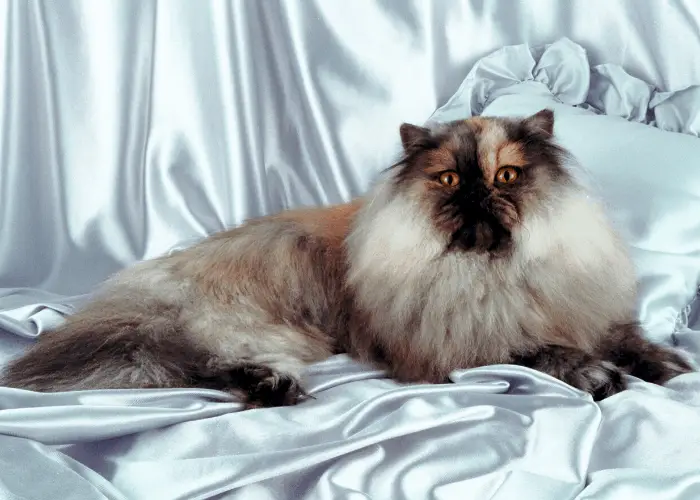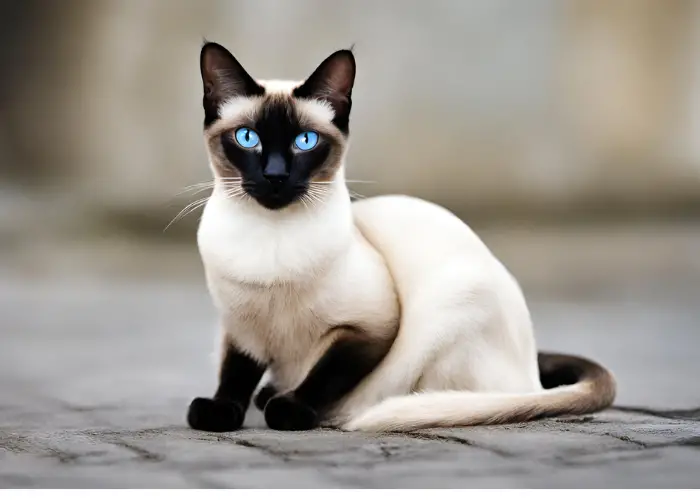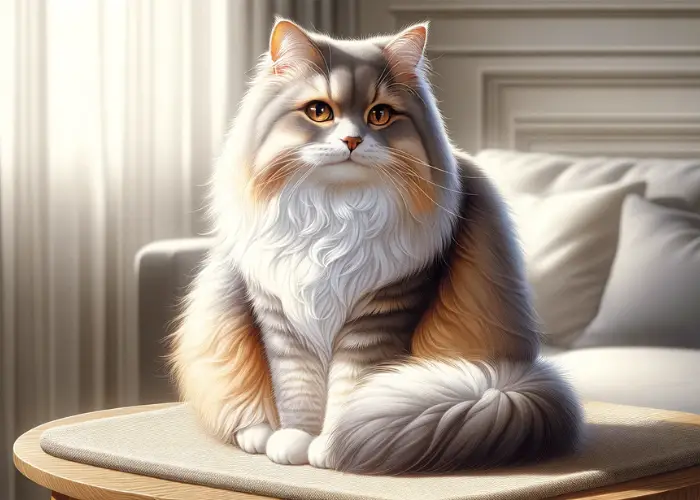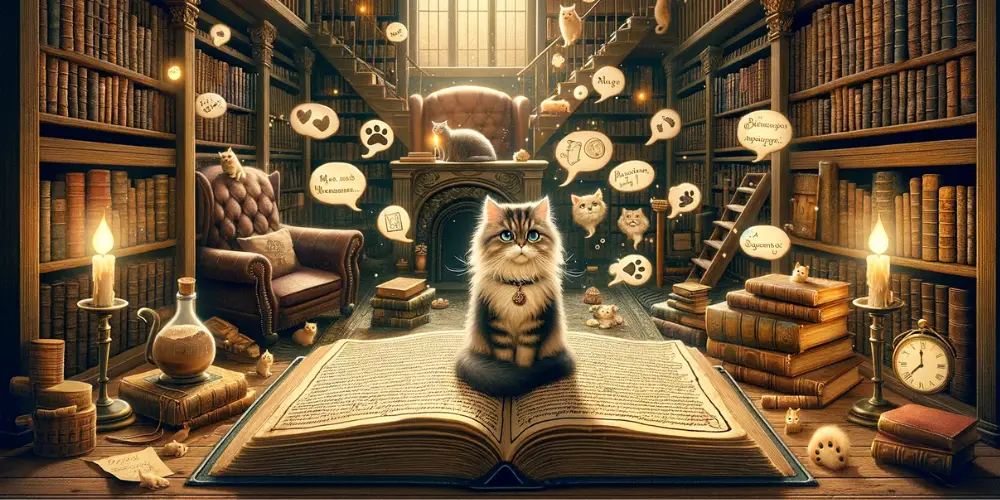Did you know that the term “pussycat,” a word we often use affectionately for our feline friends, has a history as mysterious and intriguing as the creatures it describes? Why do we call these graceful, enigmatic animals “pussycats”?
Key Takeaways:
- The term “pussycat” traces back to the Old Norse “pusa,” symbolizing something precious and treated with care, reflecting cats’ cherished status.
- Linguistic evolution from “puss” to “pussycat” through hypocorism highlights how language adapts to express endearment and familiarity.
- The affectionate use of “pussycat” underscores the deep emotional bond between humans and cats, elevating them to cherished household members.
- Semantic broadening has allowed “pussycat” to become a term of endearment for people, showcasing its gentle and affectionate connotations.
- Cultural variations in cat nicknames reflect diverse global attitudes and historical contexts, highlighting the universal love for cats.
- Pussycat” has been immortalized in literature and pop culture, embodying cats’ playful, mysterious, and endearing qualities.
- Adapting “pussycat” in modern internet culture and memes illustrates the term’s evolving nature and widespread appeal.
Etymology of ‘Pussycat’

Etymological Roots
The affectionate term “pussycat” has intriguing origins. Its roots trace back to the Old Norse “pusa,” a term that implies something small, precious, and carefully held, akin to a small sack or bag.
In Old Norse culture and texts, “pusa” was often used to denote tenderness or something cherished, reflecting the high regard in which cats were held.
Cats in Norse mythology were sometimes associated with the goddess Freya, who had a chariot drawn by cats, further underscoring their revered status in Norse society.
Linguistic Evolution and Hypocorism
The evolution from “puss” to “pussycat” showcases a linguistic process known as hypocorism, where terms are adapted to express endearment through the addition of suffixes or extra elements.
This transformation is akin to the development of “doggy” from “dog” in English, where the “y” suffix adds a layer of affection and familiarity to the term.
“pussycat” and “doggy” exemplify how languages evolve to accommodate emotional expression, particularly in referring to animals that hold a special place in human life.
By comparing “pussycat” to “doggy,” we can see a common linguistic thread in the way pet names develop to convey affection, highlighting the universal human tendency to anthropomorphize and emotionally bond with pets.
This comparison enriches our understanding of “pussycat” and offers insight into the broader linguistic mechanisms that shape our interactions with the animal world.
Cultural and Emotional Significance
“Pussycat” extends beyond mere clarification; it emphasizes the emotional bond between humans and cats, positioning them as cherished household members.
This linguistic adaptation reflects changing social attitudes towards cats, highlighting their importance in human lives as more than just companions.
Semantic Broadening
Over time, “pussycat” has evolved to encompass more than just cat reference.
It has broadened semantically to become a term of endearment for people, underscoring its gentle, affectionate connotations and use in intimate or affectionate contexts.
Theories and Alternate Origins

Folklore and Linguistic Theories
The term “puceat,” from old French, might also play a role in the evolution of “pussycat,” intertwining folklore with linguistic development and showcasing the term’s rich tapestry of origins.
Global Variations
The affectionate term “pussycat” in English exemplifies the special bond between humans and cats, a relationship cherished across various cultures worldwide.
Each culture has developed endearing nicknames for these feline companions, reflecting unique attitudes, beliefs, and historical contexts.
The following table shows diverse expressions of love for cats across cultures, highlighting their universal appeal.
| Culture | Term for Cat | Meaning/Connotation | Cultural Context | Similar Terms in English |
|---|---|---|---|---|
| Japan | Neko-chan | A term of endearment, “chan” is often used for children, pets, and friends, indicating affection. | Cats are revered, symbolized by the “Maneki-neko” or beckoning cat, reflecting a blend of affection and symbolic importance. | “Kitty,” “kitten” |
| Russia | Kotik | A diminutive form of “kot” (cat), signifying tenderness and familiarity. | Cats are often portrayed in folklore as wise and cunning, influencing their affectionate and respectful naming. | “Kitty,” “puss” |
| Arab World | Qitqit | An affectionate diminutive of “qittah” (small cat or kitten), parallel to “pussycat.” | Cats are valued for their cleanliness and independence, reflected in their affectionate language. | “Kitty,” “pussycat” |
| Italy | Micio (male) / Micia (female) | Terms that evoke a sense of softness and affection, akin to “pussycat.” | Celebrating beauty and grace in Italian culture extends to cats, emphasizing their elegant and refined nature. | “Kitty,” “puss” |
This exploration of affectionate cat naming across cultures showcases the diversity and a shared human tendency to cherish pets, especially cats.
Pussycat in Literature and Pop Culture

Literary References
The term “pussycat” has been immortalized in literature, leaving a significant mark on children’s and adult literature through its whimsical and affectionate use.
Edward Lear’s lighthearted poem “The Owl and the Pussycat” offers a delightful example:
“The Owl and the Pussycat went to sea
In a beautiful pea-green boat,
They took some honey, and plenty of money,
Wrapped up in a five-pound note.”
This poem highlights the adventures of a charming pussycat and encapsulates the term’s endearing quality, making the cat character beloved to readers across generations.
Beatrix Potter’s tales further embed “pussycat” in the literary tradition with characters like Tom Kitten, showcasing cats’ mischievous yet lovable nature, again emphasizing the term’s affectionate connotations.
Modern Media and Music
In modern media and music, “pussycat” has danced into numerous songs and movies, further cementing its place in popular culture.
The song “What’s New Pussycat?” by Tom Jones, with its catchy tune and playful lyrics, is a perfect example:
What’s new, pussycat? Whoa, whoa
What’s new, pussycat? Whoa, whoa
The song uses “pussycat” as a term of endearment, echoing the playful and affectionate sentiments associated with the word.
This track, featured in the film of the same name, showcases how “pussycat” has transcended its original use as a pet name to become a staple in the pop culture lexicon, symbolizing charm and affection.
Moreover, the term has made notable appearances in animated films and series, where “pussycat” characters are often depicted with a blend of agility, cunning, and warmth, reflecting the multifaceted nature of cats.
These portrayals not only entertain but also deepen our cultural appreciation for the term “pussycat” and the animals it represents.
Through these examples, it’s clear that “pussycat” in literature and pop culture is more than just a word; it’s a cultural icon that embodies cats’ playful, mysterious, and endearing qualities.
Its presence in various forms of media continues to endear cats to audiences worldwide, showcasing the enduring charm and appeal of these feline companions.
Modern Usage and Interpretations

The digital age has seen “pussycat” evolve in fascinating ways, mainly through internet memes and trends.
One iconic example is the “I Can Has Cheezburger?” meme, featuring a wide-eyed cat – or in internet parlance, a “lolcat” – which often uses baby-like or phonetically spelled captions, including playful uses of “pussycat.”
Such memes not only spread rapidly across the web but also contribute to the evolving language of online communities, showcasing “pussycat” in new, humorous contexts that resonate with a global audience.
Conclusion

The term “pussycat” is more than just a nickname; it’s a testament to the enduring bond between humans and cats, rich in history, cultural significance, and affection. It encourages us to explore and share our pet-related terms and experiences.
Do you have a unique nickname for your cat or a story to share about pet nomenclature?
Join the conversation and share your experiences in the comments below!
REFERENCES:
Online Etymology Dictionary. (n.d.). Pussy-cat. Retrieved from https://www.etymonline.com/word/pussy-cat


